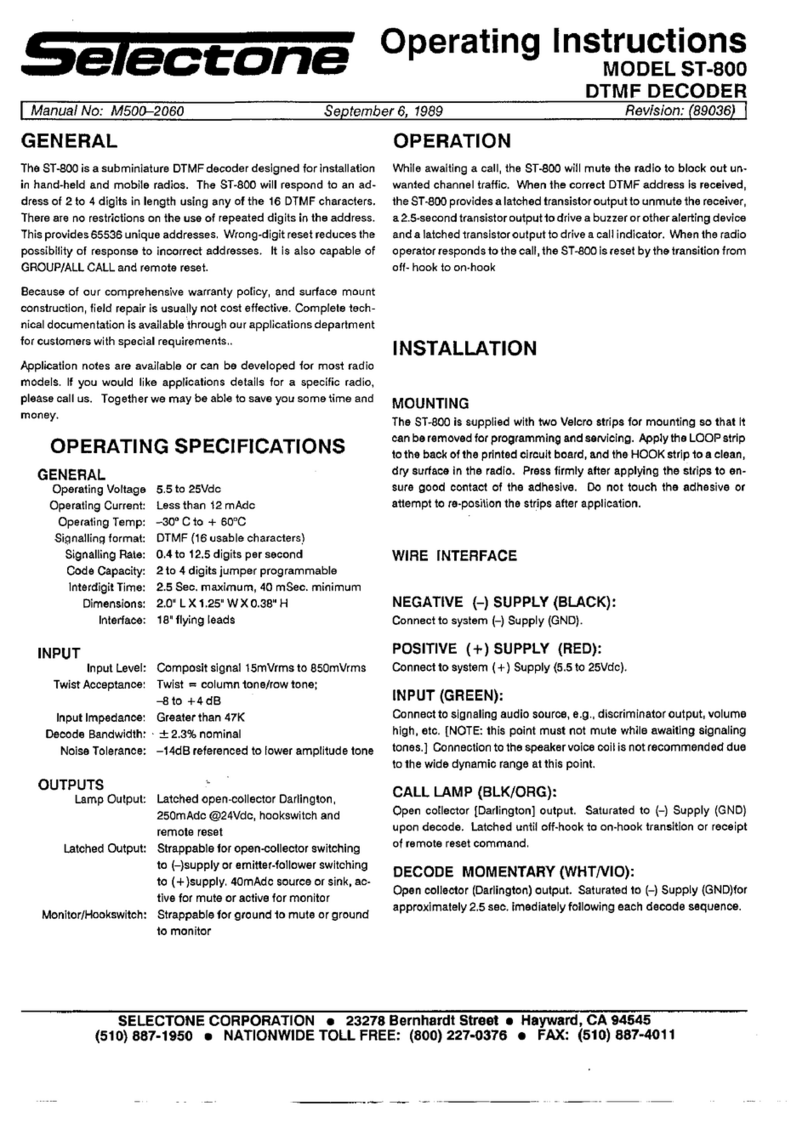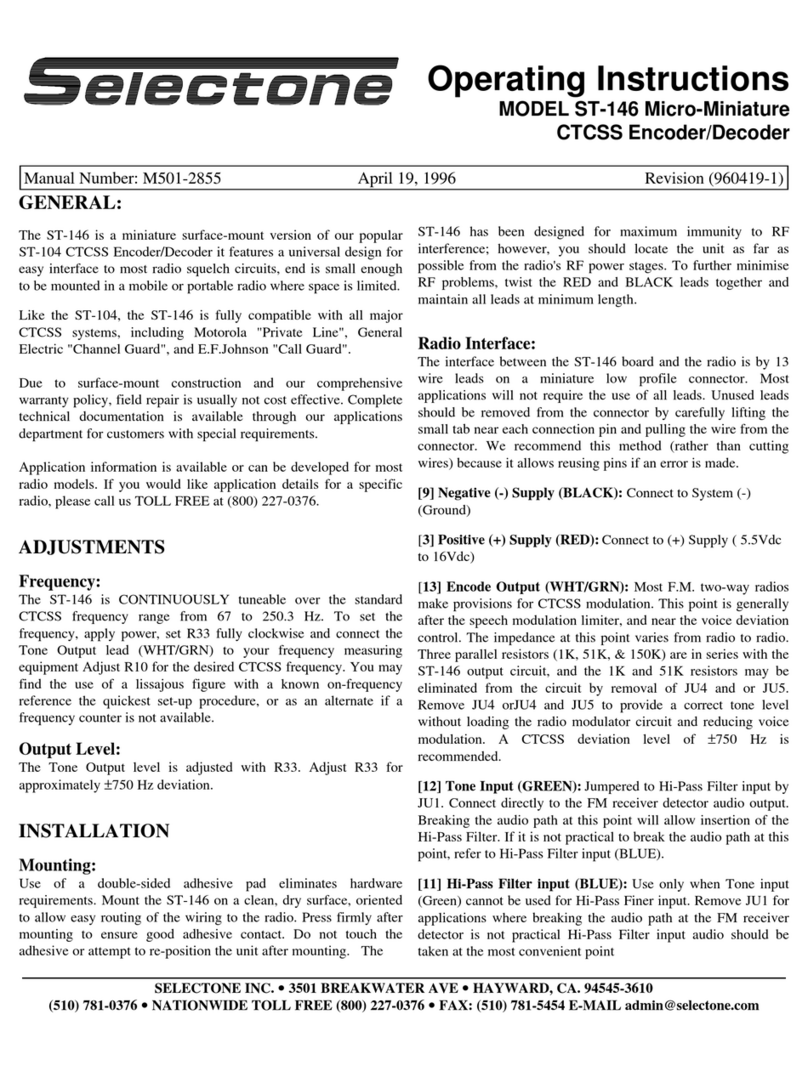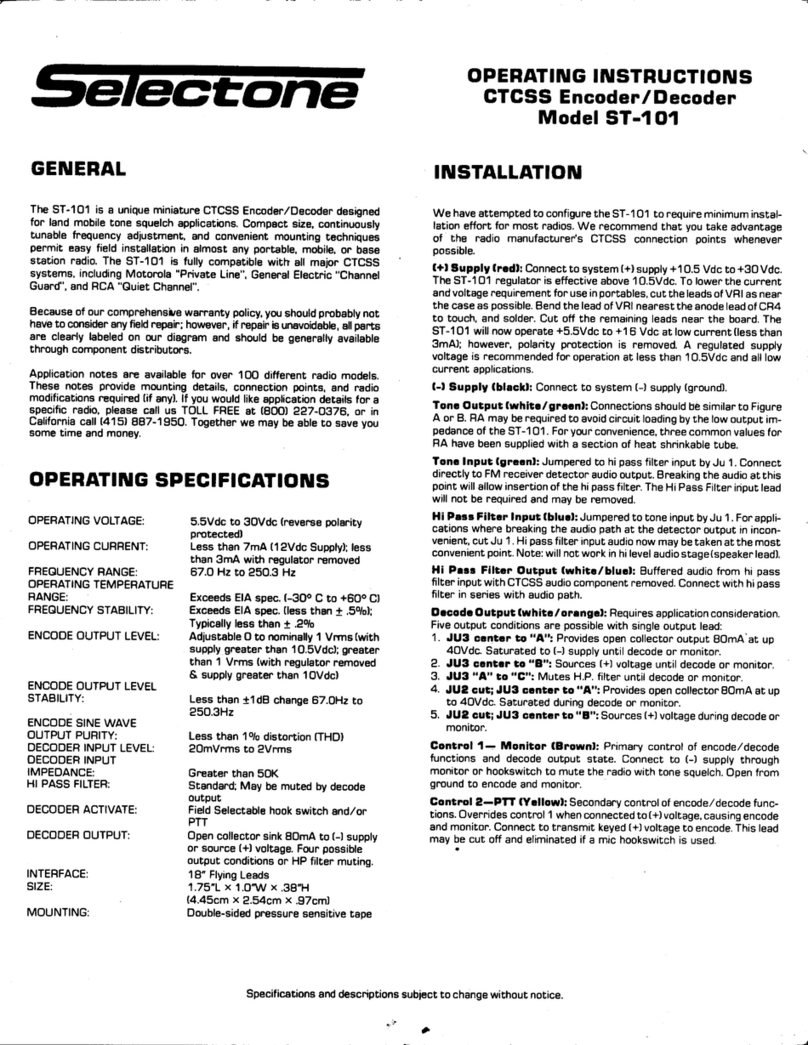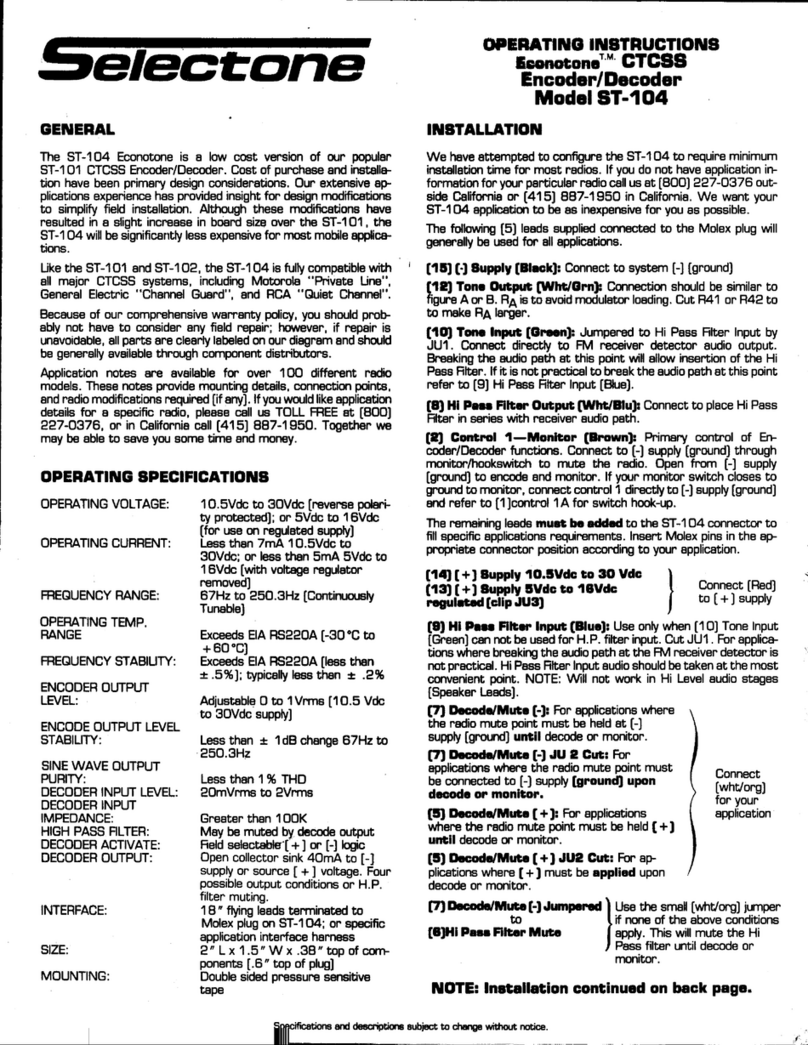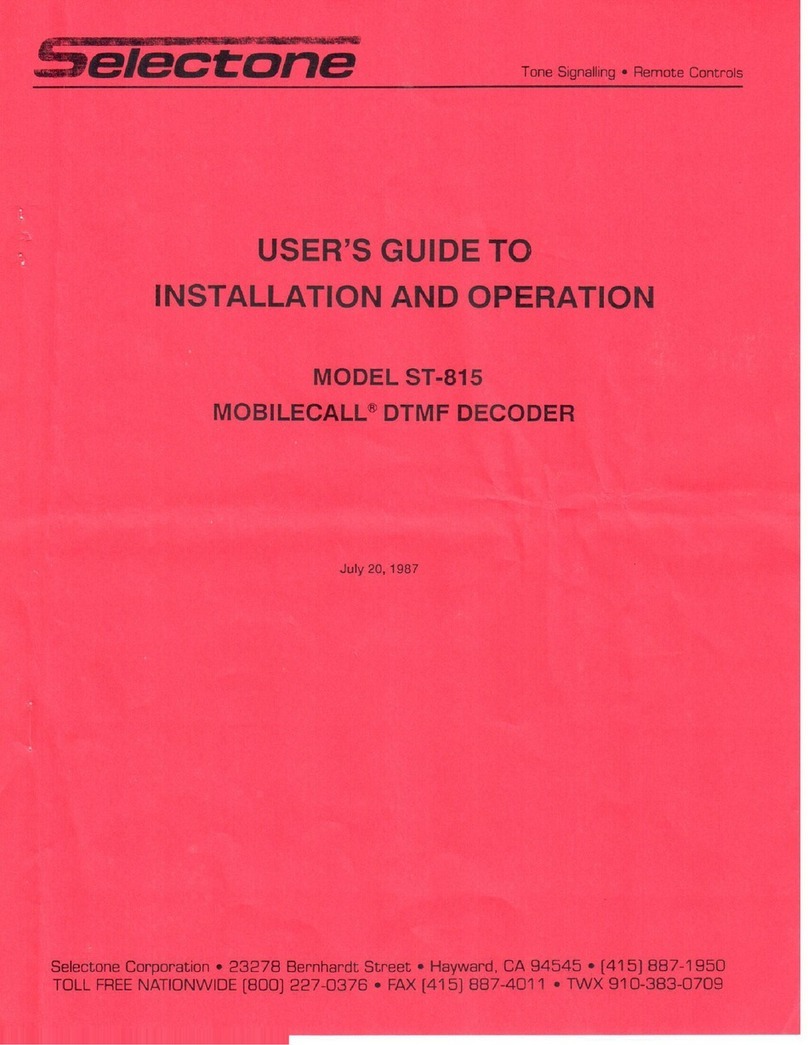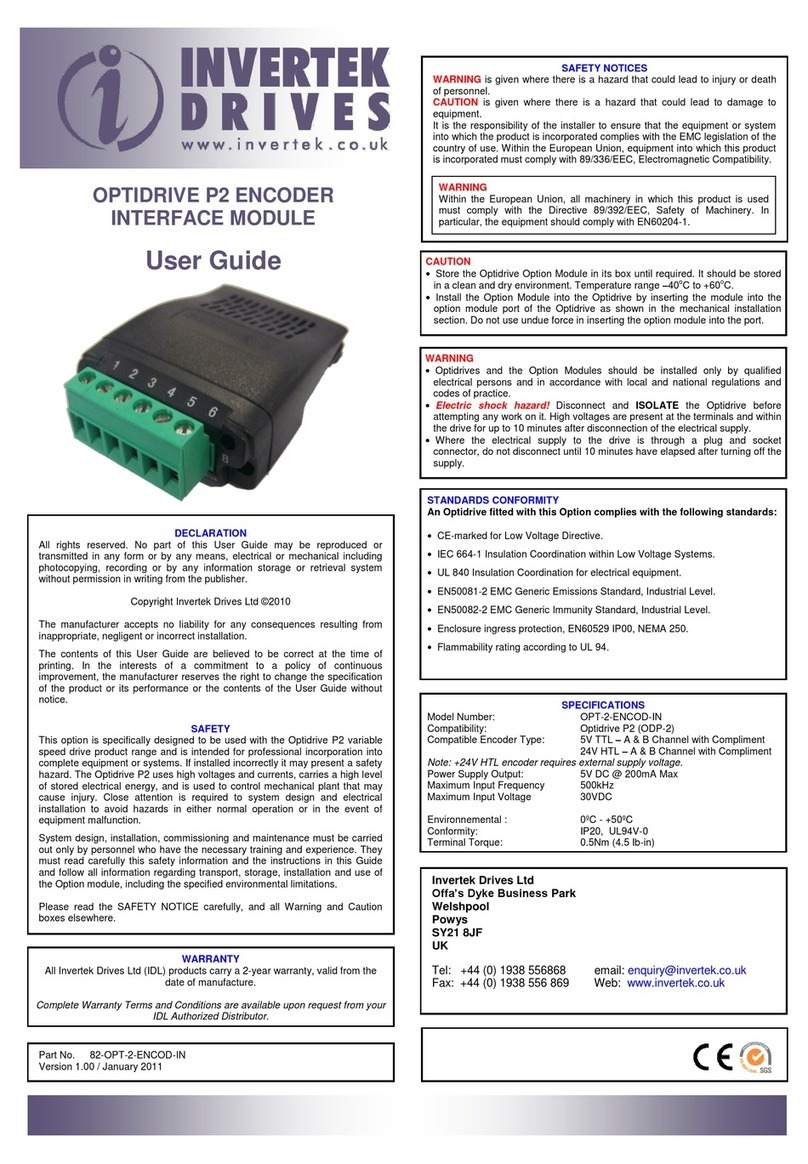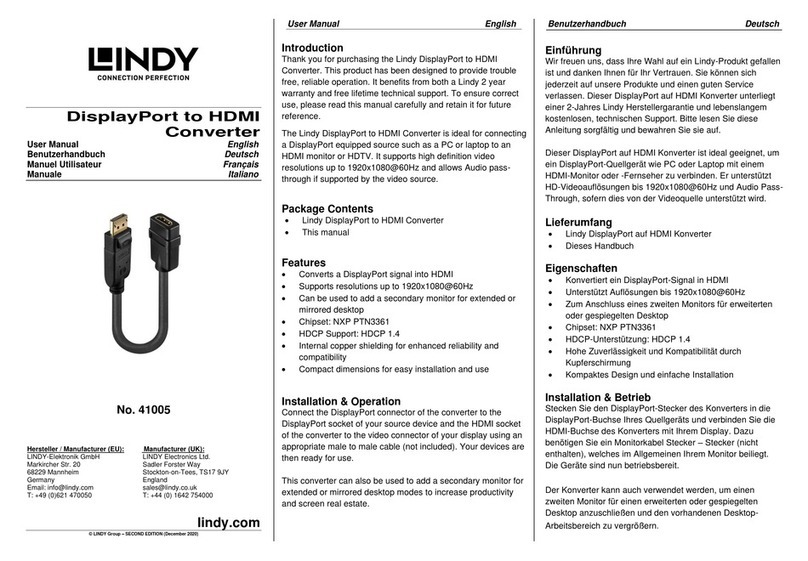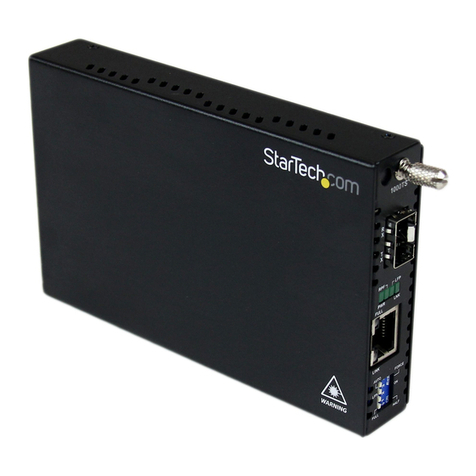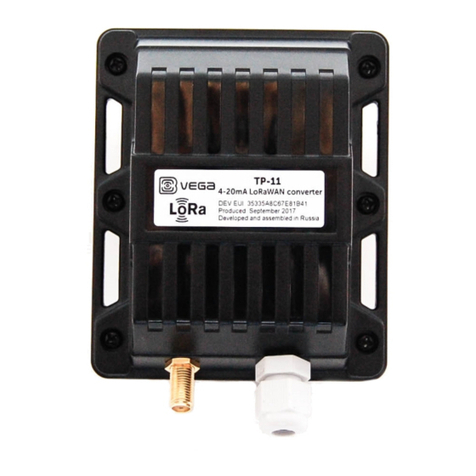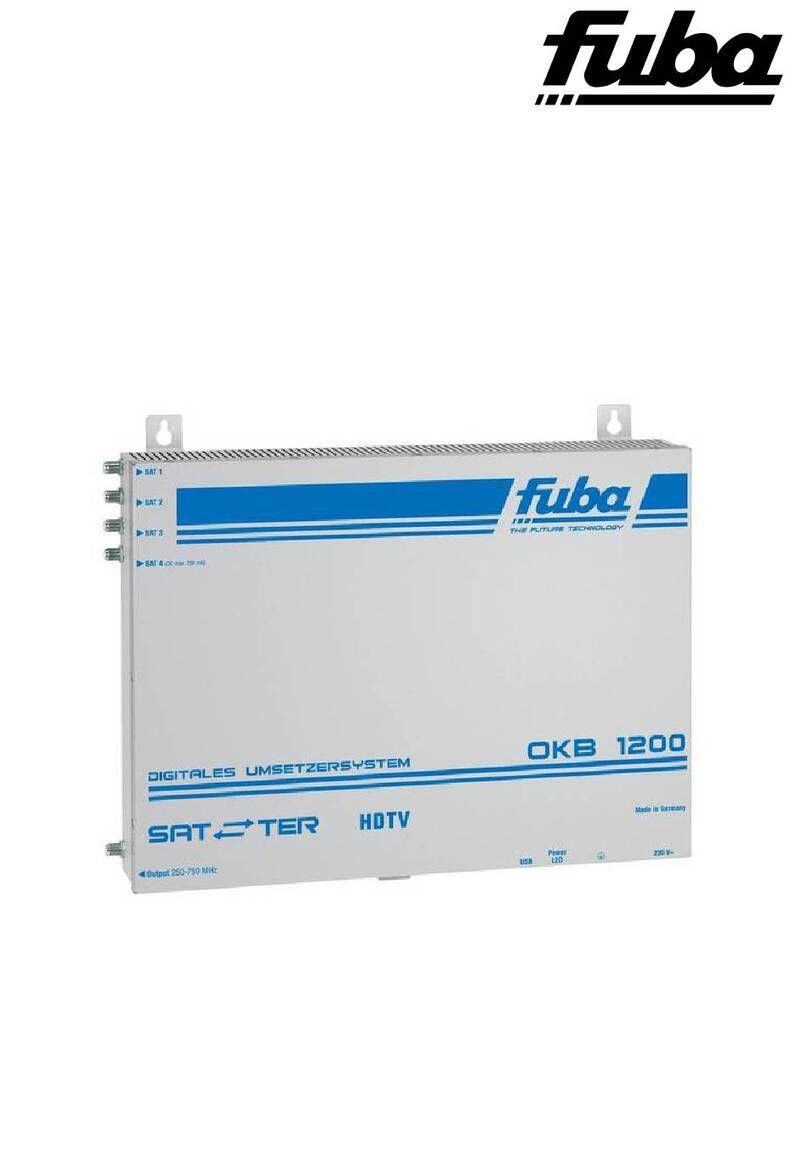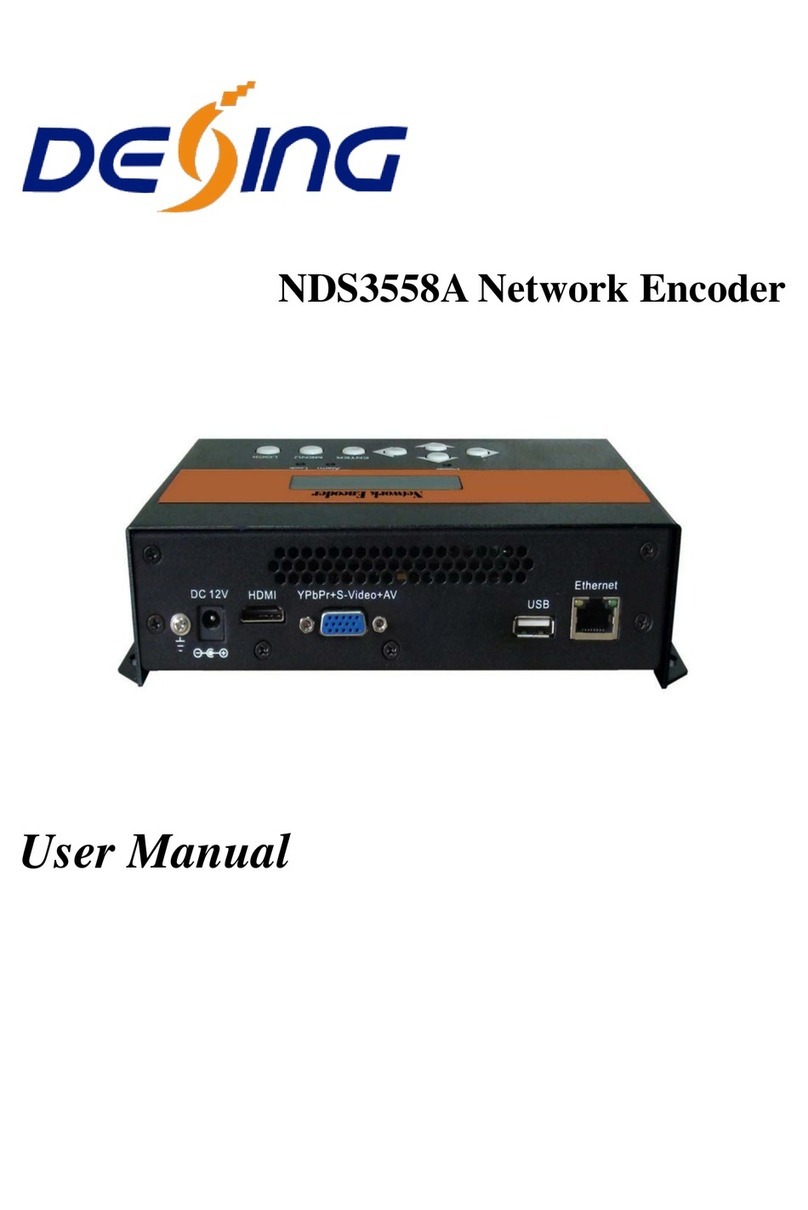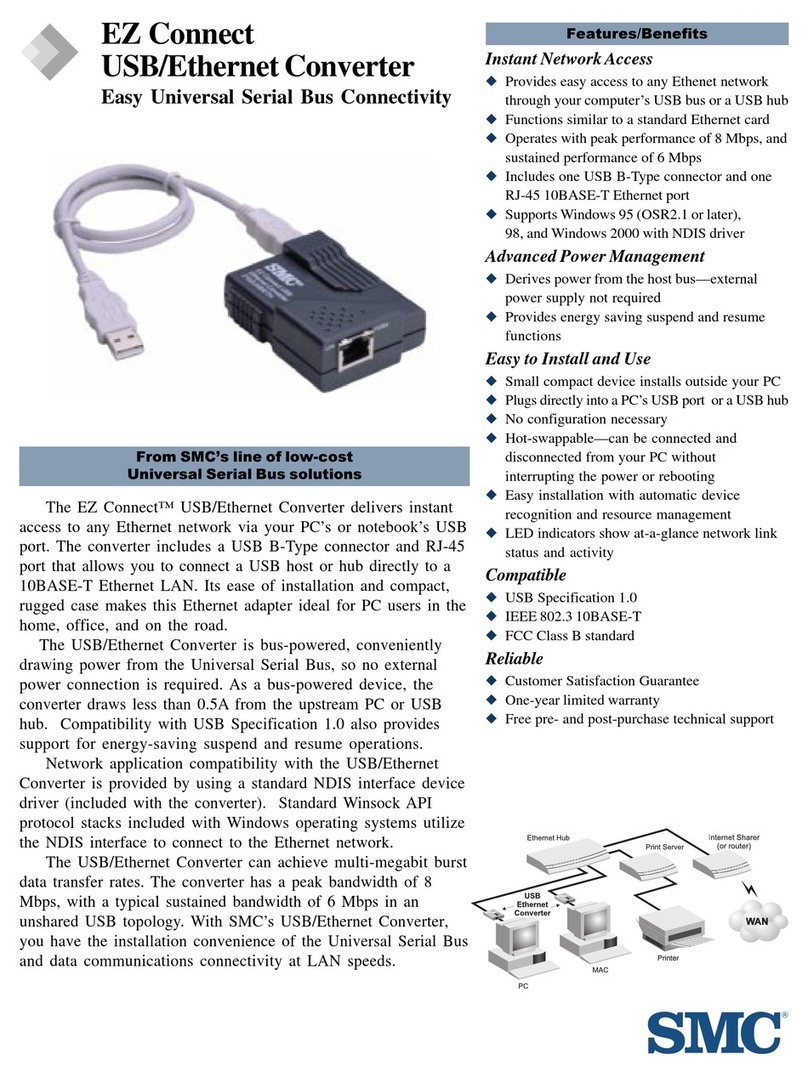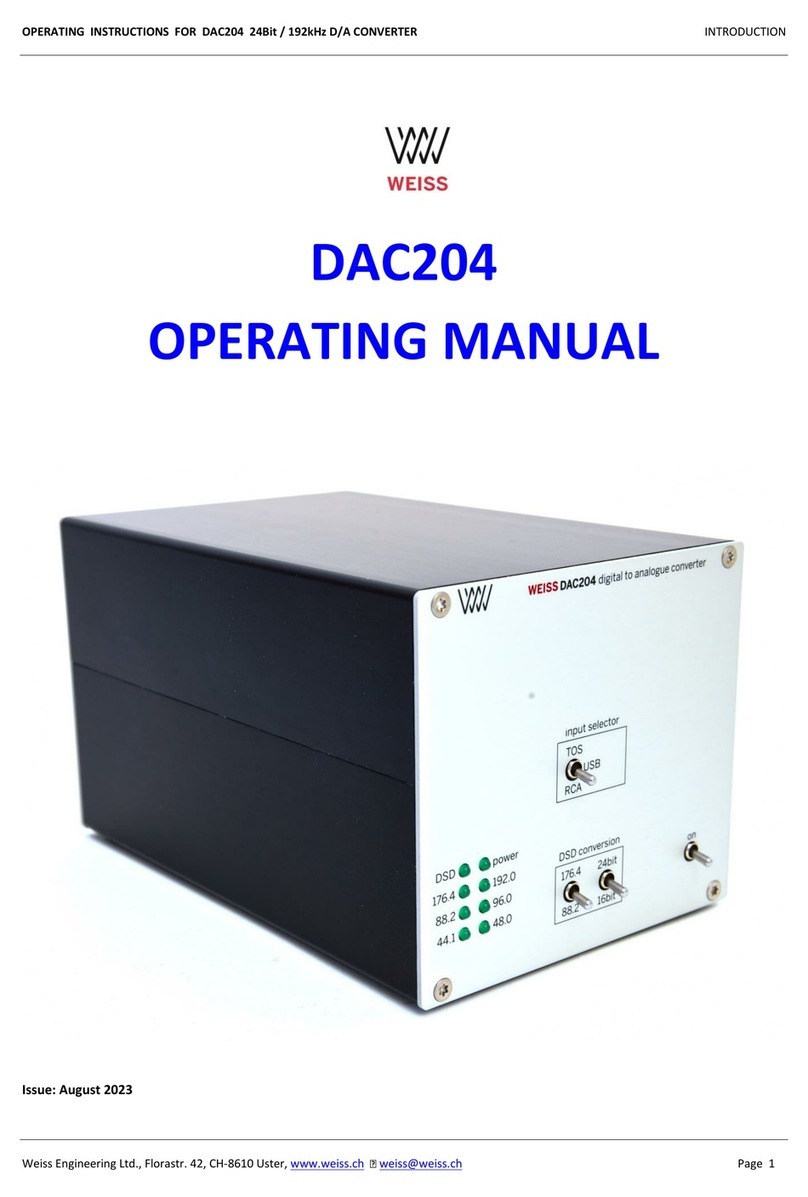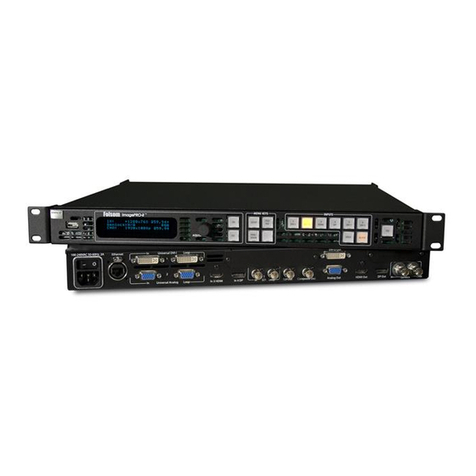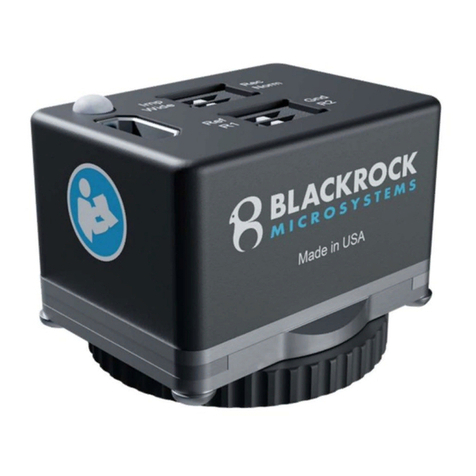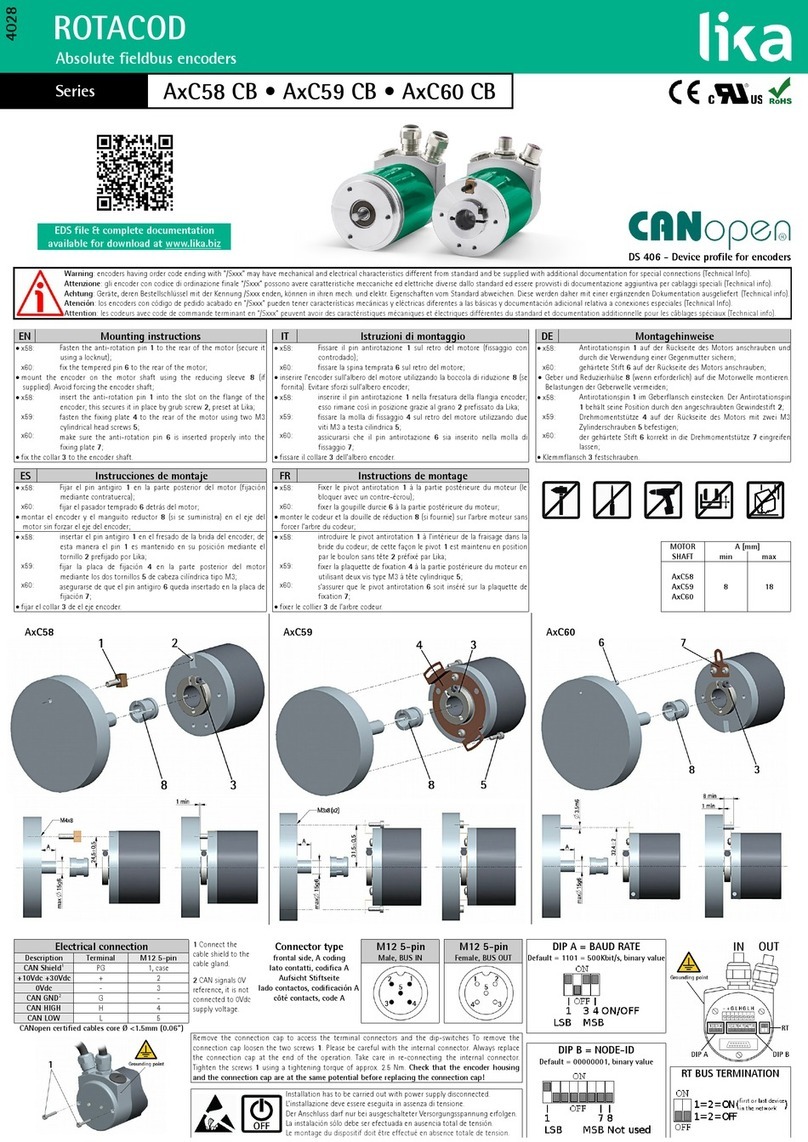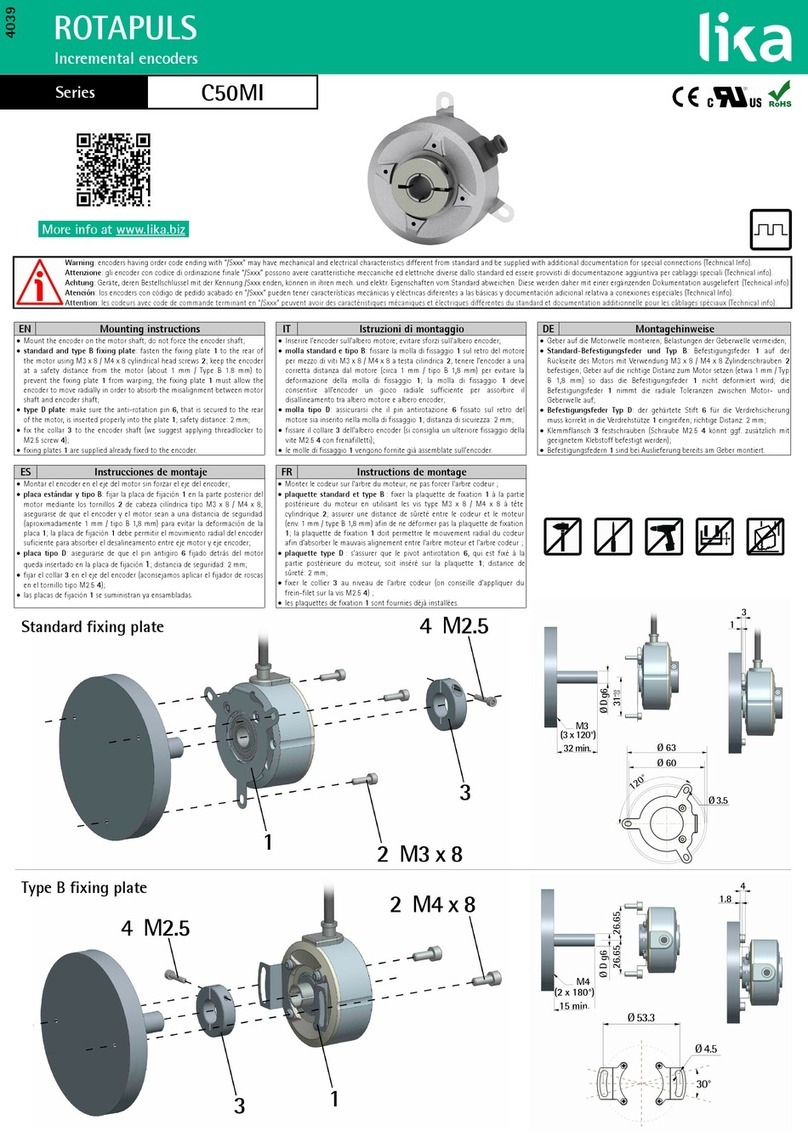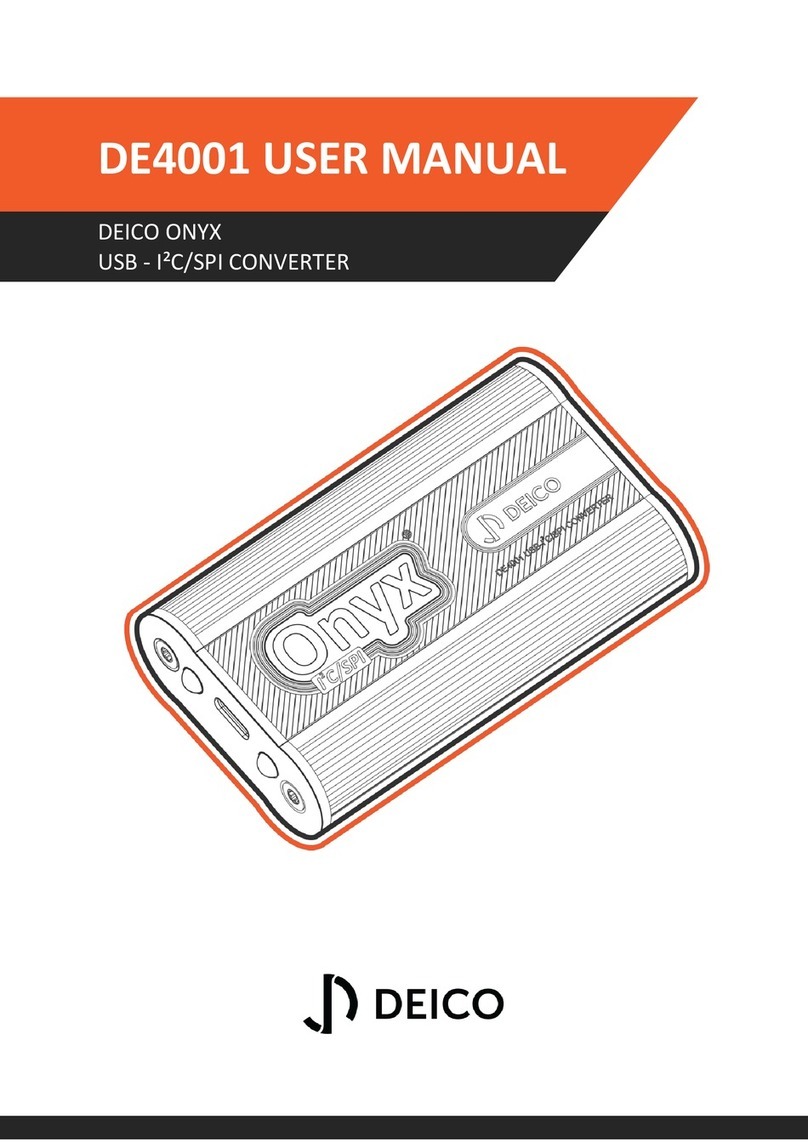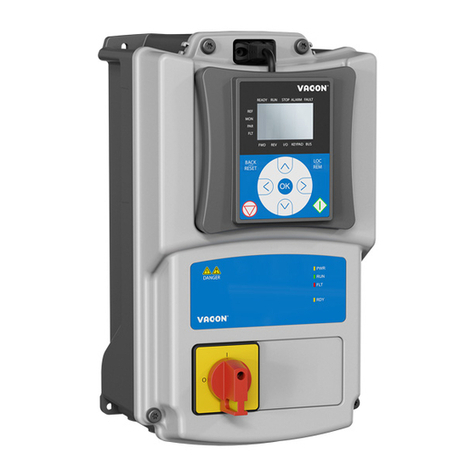Selectone ST-25A User manual

MODEL ST-25A
Mobilecall
®
Voice Encryption Module
Manual # M501-9665 September 12, 1996 Revision (960912-1)
GENERAL
The ST-25A is a voice encryption device used to secure two
way radio communication systems. The cipher process uses a
proprietary microprocessor controlled analog scrambling
algorithm. Each unit can be programmed with four User Code
Keys, with over 4 billion code keys to choose from. Special
factory set master code key groups are reserved to provide
extra security for special services. Each master code key group
has over 268 million possible code keys. To maintain security,
code keys are never transmitted. Audio processing filters
provide high quality low distortion recovered audio. The small
size and low power requirements make it ideal for portable,
mobile, and base station use.
Field programming is accomplished with either the ST-905
Keypad Programmer or the ST-907 PC based programmer.
The ST-905 Keypad Programmer must be Version 1.3 or
greater. The version can be found on the bottom of the unit
printed on a small white tag. Version 1.3 will read "V1.3". The
ST-907 must be Version 3.1 or greater. Version 3.1 will be
noted on the distribution disk for ST-CONFG, and displayed as
Ver 3.1 in the upper right hand corner of the display screen
when running the ST-CONFG program. Older versions of
either the ST-905 or ST-907 will not properly program the
ST-25A
SPECIFICATIONS
Total Code keys:
Operating Voltage:
Operating Current:
User Code keys:
Ciphered Algorithm:
Synchronization:
Delay Before Initial
Synchronization:
Audio Input Level:
Audio Output Level:
Input to Output Gain:
Frequency Response:
ST-25A Programming:
Memory:
Indicators:
Digital Inputs:
Temp. Range:
Interface:
Size:
Over 4 billion
5.2 to 18Vdc
< 8mA
Over 268 million
Real time frequency domain
Initial and maintenance bursts
Programmable 50mS to 1.2S
0.01 to 2.5 Vpp ac
0.01 to 2.5 Vpp ac
LESS THAN ± 0.5 dB
300 Hz to 2600 Hz.
External Keypad (ST-905 V1.3)
PC Programmer (ST-907 VER 3.1)
Non-volatile EEPROM
Visual (LED) or audable (Spkr. Beep)
Logic Low, less than 1 Vdc
Logic High, Greater than 4 Vdc
30°C to +70°C
18" flying leads terminated at a
low profile connector
1.00"W X 1.50"L X 0.25"H
(25.4mm X 38.20mm X 6.35mm)
OPERATION
FNote: Operation of radio equipment with
encrypted speech capability may be government
regulated. You are responsible for compliance with
applicable radio regulations regarding operation of this
equipment.
Operation is almost transparent to the user. The user may
select any one of 4 previously programmed code keys. The user
then enables or disables the transmit cipher mode. Once
enabled all subsequent transmissions will be ciphered using the
selected code key. Ciphered reception is automatic; other units
transmitting with the selected code key will be automatically
deciphered. Clear transmissions will also be received
automatically.
Each radio model provides different operational challenges.
This is generally due to availability of unassigned switches or
blank panel space capable of supporting accessory switches.
To accommodate these varying situations the ST-25A provides
two modes of operation for enabling and disabling transmit
cipher operation, and making User Code Key selections.
SWITCHED MODE
This is the default mode of operation, as shipped from the
factory. Clear/Ciphered switching is achieved by a dedicated
switch providing a single closure to (-) Supply. User Code Key
selection is also selected by a dedicated switch providing a
binary input to the two Code Select lines on the ST-25A.
DOUBLE CLICK MODE
This mode of operation is enabled during programming.
Operation with this mode minimizes accessory switch
requirements on the radio. The Clear/Ciphered line is connected
to any switch (except PTT) capable of providing momentary
closures to or away from ground. The switch retains its normal
functions; however the user can toggle between Clear/Ciphered
by operating the switch two times in rapid succession (Double
Clicking). The ST-25A will then provide a tone output to the
radio speaker. A high frequency beep or series of beeps
indicate subsequent transmissions will be ciphered. A low
frequency tone for .5 Sec. indicates subsequent transmissions
will be in the Clear (NOT Ciphered).
User Code Keys are selected by operating the same switch four
times in rapid succession (Quad Clicking). Quad Clicking
permits switching between User Code Keys when in the
transmit Cipher Mode (Double Click selection). Each Quad Click
transaction advances the selected User Code Key one step
around a loop of possible selections (Primary, Alt #1, Alt #2, Alt
#3, Primary ...). Following a Quad Click sequence the ST-25A
responds with speaker beeps to indicate the selection position
(Primary: 1 Beep, First Alt: 2 Beeps, Second Alt: 3 Beeps, Third
Alt: 4 beeps). When returning to cipher mode from clear mode,

the last used User Code Key will be selected and indicated with
speaker beeps. Following power-up Cipher operation will select
the Primary User Code Key. Slow switching of this control
permits operation in a normal manner as assigned by the radio
manufacturer. Typically this is connected to the monitor switch,
but other switches can be used (freq. select).
In either mode a visual cipher indicator is available. An LED can
be used to indicate reception of a valid cipher signal as well as
transmit in cipher.
INITIAL SYNCHRONIZATION DELAY
All radio systems have an operating delay. This is the time
between PTT activation at a transmitter and speaker audio
being available at the receiving point. This time may vary
considerably from system to system or even from transmission
to transmission. For reliable cipher operation the ST-25A must
wait for this time period before signaling the beginning of a
ciphered transmission. System delays must be evaluated and
accommodated for with the INITIAL SYNCHRONIZATION
DELAY parameter.
For many radio operators it is difficult to reliably know how long
to wait before speaking in ciphered mode. This can cause loss
of the beginning of a message. The ST-25A can be
programmed to accommodate this problem. For cipher
transmissions the ST-25A will provide all the necessary timing
and beep the speaker as a "GO AHEAD" and speak indication.
USER CODE KEYS
Of the more than 268 million available code keys, four may be
selected and easily accessed as User Code Keys for each unit.
These may be used to provide different levels of security within
a particular radio system (officers, sergeants, lieutenants,
captains).
INSTALLATION
Installation should be done only by a qualified two-way radio
technician. Installation consists of programming, then mounting
the unit in the radio set, and making the electrical connections.
Installation of secure speech equipment is often time
consuming and costly due to the application
requirements presented by the radio equipment.
Selectone may be able to provide a substantial cost
savings for installation. Please contact the Selectone
Sales Department for details on factory installation of
secure speech equipment.
Selectone supports this product with application assistance on
our Toll Free phone line and with APPNOTES (Application
Notes). We encourage use of our application service to
determine hookup. Most radios do not provide an interface
connector for easy installation of voice encryption equipment as
is often provided for CTCSS applications. Radios that are not
in our application library will receive special consideration and
may qualify for sample installation of two units at the Selectone
factory for no cost.
Installation requires a minimum of eight external connections.
These connections are Power, Ground, Transmit Audio Input
and Output, Receive Audio Input and Output, PTT Input, and
the Clear/Ciphered Input. The most critical connections are
Transmit Audio Input and Output, and Receive Audio Input and
Output. Improper installation of these connections can result in
distorted audio, and the loss of either high or low frequency
voice components.
The following paragraphs describe each of the external
connections. Numbers shown in brackets [#] refer to the
connector pin number.
[3] POSITIVE (+) SUPPLY (RED)
This wire should be connected directly to a filtered source of
continuous positive DC voltage in the range of +5.2Vdc to
+18.0Vdc. This connection should be made "downstream" from
the power switch and the power supply filter components in the
radio set. If a regulated source of DC voltage is available, it
should be used. Low level microphone audio is passed through
the ST-25A and use of a quiet and stable source of DC voltage
inside the radio set will reduce the possibility of picking up
power supply noise that may affect audio signals.
[9] NEGATIVE (-) SUPPLY (BLACK)
This wire should be connected to a location inside the radio that
will supply a DC power ground return to the ST-25A. To
eliminate ground loops and power supply noise, the ground
return should be the same power supply ground used in the
transmit and receive audio stages.
[10] CLEAR/CIPHERED INPUT (BLACK/YELLOW)
Switched Mode: This wire is used to select the transmit cipher
mode when pulled to logic low (< 1Vdc). This may be
accomplished with an ON/OFF SPST switch. When this lead is
at logic high (> 4Vdc) the ST-25A will operate in clear mode
when transmitting.
Double Click Mode: This wire is used as an input line for the
Double Click and Quad Click signal. It is normally tied to the
monitor switch of the radio, however any switch can be used.
The connection point in the radio must switch between logic
high (>4Vdc) and logic low (< 1Vdc). The ST-25A analyzes
transition between these levels and is not concerned with the
resting state. This lead is intended to operate in parallel with the
existing radio function without effecting radio operation.
[12] TRANSMIT AUDIO INPUT (GREEN)
[13] TRANSMIT AUDIO OUTPUT (WHITE/GREEN)
These two wires should be connected in series with the transmit
microphone audio signal path inside the radio set. The
optimum location for connection is directly in series with the
microphone. If the microphone requires bias, then the audio
path MUST be broken "downstream" of the bias source. In
order to provide the best transmit audio quality, be sure that the
transmit audio signal path is broken BEFORE the pre-emphasis
and transmit modulation limiter circuit. Also, be sure that the
transmit audio path is broken next to a "DC blocking" capacitor,
or in such a location as not to upset any internal DC bias
voltages in the transmit audio stages.
[6] PTT INPUT (YELLOW)
The PTT Input detects a pull to ground on the PTT line in the
radio set to indicate a transmit condition. To install the PTT
Input line on the ST-25A, connect this wire to the PTT line in the
radio set at a convenient location.

[11] RECEIVE AUDIO INPUT (BLUE)
[1] RECEIVE AUDIO OUTPUT (WHITE/BLUE)
These two wires should be connected in series with the receive
audio path inside the radio. The optimum location for
connection is directly off the receiver detector circuit BEFORE
any audio processing circuits (de-emphasis). This connection
location will provide high quality audio recovery. Be sure not to
break the audio path between the detector and the squelch
circuit, or between the detector and the CTCSS decoder if one
is used. Also, be sure that the receive audio path is broken next
to a "DC blocking" capacitor, or in such a location as not to
upset any internal DC bias voltages in the receiver audio
stages.
[7] EE CS (BROWN)
Switched Mode: This input is only used for programming and
the lead should be removed from the connector.
Double Click Mode: Speaker beep is vital to operation in this
mode. This lead is the beep output. It may usually be connected
directly to the high side of the speaker. In some applications
direct speaker connection may not be usable. In these cases
connect to the input of the receiver audio amplifier through a
series resistor. The value of the series resistor will have to be
determined experimentally.
NOTE: Many portables power down the receiver audio amplifier
when squelched. Refer to [4] Code Select 1 Input, Double
Click Mode for additional information.
[2] EE DI/DO (VIOLET)
This input is only used for programming and the lead should be
removed from the connector.
[4] CODE SELECT 1 INPUT (WHITE/ORANGE)
[5] CODE SELECT 2 INPUT (BLACK/ORANGE)
Switched Mode: These two inputs are used for selecting up to
four unique code keys on the ST-25A. These inputs may be left
unconnected if only the Primary User Code Key is to be used.
The three Alternate User Code Keys are selected by connecting
these leads to a binary coded switch. The leads are pulled to
logic high by 47K resistors on the ST-25A board. The switch
must cause switching to ground (logic low) as indicated in
Table 1 (Logic High = Open, Logic Low = Grounded).
CODE KEY Code Select 1 Code Select 2
Primary Open Open
1st Alternate Grounded Open
2nd Alternate Open Grounded
3rd Alternate Grounded Grounded
TABLE 1
Double Click Mode: In this mode CODE SELECT 1 is
redefined and provides an output to enable the receiver audio
amplifier for speaker beeping. When beep tones are not present
this lead is high impedance. During beeping it is switched to
ground through a series 10K resistor. If the receiver audio
amplifier is turned off while the receiver is squelched, this
output may be used to enable the amplifier for speaker beeping.
[8] EE SK & CIPHERED/CLEAR LED (BLACK/BROWN)
This output is used to drive an LED. Since the output drive
current is only 8mA, a low current high efficiency LED must be
used. The CIPHERED/CLEAR LED output should be connected
directly to the anode of the LED. The cathode of the LED must
be connected directly to ground. This lead is also used for
programming and may be left unconnected if not required.
MOUNTING
Use of a double-sided adhesive pad eliminates hardware
requirements. Mount the ST-25A on a clean, dry surface
oriented to allow future adjustments should they be necessary.
Press firmly after mounting to insure good contact of adhesive.
Do not touch the adhesive or attempt to reposition the unit after
mounting.
The clear shrink wrap attached to this manual can be used to
insulate the ST-25A after all of the adjustments have been
made.
ADJUSTMENTS
GAIN SETTINGS:
As shipped from the factory, the ST-25A is fully functional for
many applications. However experience indicates the ST-25A
functions best when audio signals internal to the ST-25A are at
or near pre-determined levels. To optimize operation, receive
and transmit levels must be evaluated independently and the
proper gain setting resistors must be installed. Use the following
procedures to determine the input level for the receive and
transmit audio paths. The measured levels are for evaluation
with TABLE 2. Use TABLE 2 to select resistors values for
optimum operation. Measurements may be made with an
oscilloscope or an AC level meter. For convenience TABLE 2
presents input levels in mV peak to peak and mVrms.
Input Level Gain Resistor
mVpp
From To mVrms
From To TX R47
RX R7 TX R46
RX R22
10
22
40
73
134
244
447
819
1500
21
39
72
133
243
446
818
1499
2500
3.5
7.6
15
26
51
86
161
291
531
7.5
14
25
50
85
160
290
530
885
7.5 K
15 K
27 K
51 K
100 K
180 K
430 K
1.2 M
---
8.2 K
15 K
27 K
56 K
100 K
200 K
470 K
1.5 M
---
TABLE 2

Receive: Measure the level on the [11] RECEIVE AUDIO
INPUT (BLUE) lead while receiving a full quieting signal
modulated at full system deviation. Use this level to select R7
and R22 from TABLE 2.
Transmit: The RF generated by the transmitter often makes it
difficult to make accurate measurements for the microphone
circuit. Two methods of measurement are presented, the first
does not always produce accurate results. If method 1 does not
appear effective use method 2.
METHOD 1
Key the transmitter and while speaking loudly into the
microphone, measure the level on the [12] TRANSMIT AUDIO
INPUT (GREEN) lead. Use this level to select R47 and R46
from TABLE 2.
METHOD 2
Disconnect the [12] TRANSMIT AUDIO INPUT (GREEN) from
its connection in the radio. Use an audio signal generator to
inject a 1KHz tone into this lead. Key the transmitter and adjust
the output level from the signal generator to produce 2/3 system
deviation as measured on a service monitor. Un-key the
transmitter and measure the output level from the signal
generator. Use this reading multiplied times 3 to select R47 and
R46 from TABLE 2.
NOTE: In some cases the output level from the signal generator
may be too low for accurate readings, or the level may be
difficult to adjust. In these cases build a resistive divider with
the supplied 7.5K and 15K resistors from the resistor packs.
Don't damage the resistors they may be required as gain
resistors. Connect the 15K to the output of the signal generator,
connect the 7.5K to (-) Supply for the ST-25A, and connect the
junction between the resistors to [12] TRANSMIT AUDIO
INPUT (GREEN). Key the transmitter and adjust the output
level from the signal generator to produce 2/3 system deviation
as measured on a service monitor. Measure the output level
from the signal generator. Use this reading to select R47 and
R46 from TABLE 2.
Don't forget to reconnect the [12] TRANSMIT AUDIO INPUT
(GREEN) lead in the radio.
SYNCHRONIZATION LEVEL:
During cipher transmissions the ST-25A transmits
synchronization information approximately twice per second.
This signal carries no coding information but is necessary for
proper operation. For optimum performance the synchronization
bursts should be adjusted to produce 1/2 system deviation.
After installation is complete, switch to the cipher mode and key
the transmitter. Using a service monitor with an oscilloscope
display, adjust R10 for a peak reading of ± 1/2 system
deviation. Deviation readings made with a deviation meter may
not accurately measure the intermittent synchronization burst
signal. If proper adjustment is difficult or not possible, the
transmit audio gain may be set incorrectly. Repeat the gain
setting procedure for the transmitter using METHOD 2. If
difficulties continue, contact the Selectone Applications
Department for assistance.
PROGRAMMING
Field programming is accomplished with either the ST-905
Keypad Programmer or the ST-907 PC based programmer.
The ST-905 Keypad Programmer must be Version 1.3 or
greater. The version can be found on the bottom of the unit
printed on a small white tag. Version 1.3 will read "V1.3". The
ST-907 version must be Version 3.1 or greater. Version 3.1 will
be displayed as VER 3.1 in the upper right hand corner of the
display screen when running the ST-CONFG program. Older
versions of either the ST-905 or ST-907 will not properly
program the ST-25A
Whether using the ST-907 or the ST-905 there are 6
parameters to be considered for programming. They are:
1. Parameter 0 Initial Synchronization Delay
2. Parameter 1 First Alternate User Code Key
3. Parameter 2 Second Alternate User Code Key
4. Parameter * Third Alternate User Code Key
5. Parameter 3 Primary User Code Key
6. Parameter 9 Operating Mode
(Switched/Double Click,
Clear/Cipher)
The ST-907 uses the DOS program ST-CONFG and provides
all necessary hookup and programming information as screen
prompts.
To use the ST-905 use the following procedure.
1. Connect the Red (+) and Black (-) leads of the ST-905 to a
6 to 18 Vdc power source (a 9 Vdc transistor battery is an
acceptable power source.)
2. Connect the ST-905 to the ST-25A with the supplied cable.
3. Enter the value desired.
4. Press * and # simultaneously [*#].
5. Enter the parameter number.
6. Repeat steps 3 through 5 for each parameter.
INITIAL SYNCHRONIZATION DELAY (Parameter 0)
Nine possible entries are available for this parameter. The value
selected determines the delay time the ST-25A will use between
operation of the PTT and Initial Synchronization. Delays are
available in 100mS steps from 50mS to 850mS. The value
entered is the 100's digit of the required delay. For example 0 =
50mS, 1 = 150mS, 2 = 250mS etc. Factory default is 2 or
250mS.
If 9 is entered the delay is set to 1.2 Sec. At the end of this time
period an audible beep is sent to the speaker. The beep
indicates "GO AHEAD" and speak. For most operations the 9
selection will provide the most friendly user interface. However
the beep outputs must be connected for this feature to be
effective.

R22
CUSTSELECT R23
820K
C24
2200PF
2PoleHighPass
C16
2200PF
C9
.01UF
R26
100K
5
6
7
U7B
LM358
R37
510K
Notch
R25
33.2K 1%
C14
.01UF
R11
82K
C10
.022UF
R14
56K
R12
6.8K
2
3
1
8
4
U7A
LM358
R13
2K
+5VDC
C25
2200PF
C8
.022UF
R41
20K
R42
20K
C6
.01UF
R43
680K
3PoleHighPass
+5VDC
2
3
1
4
1
1
U5A
TL064B
R18
470K
Vb
**MODULATOR**
R15
470K
VB 12
13 14
U5D
TL064B
X0
12
X1
13
Y0
2
Y1
1
Z0
5
Z1
3
INH
6
A
11
B
10
C
9
X
14
Y
15
Z
4
VDD
16 VSS
8
VEE
7
U4
4053
Vb
**UPPER SIDEBAND FILTER**
R40
110K
C26
2200PF
2
3
1
4
1
1
U3A
TL064
C15
2.2UF
C5
2.2UF
+5VDC
VB
1
J1A
RX AUDIO
OUTPUT
R51
180OHM
5
6 7
U5B
TL064B
C11
1000PF
C13
120PF
R10
100K1T
R44
240K
R21
100K
R20
100K
R46
CUSTSELECT
VB
SyncAdjust
R19
160K
+5VDC
R17
2M
10
9
8
U5C
TL064B
**SYNC DETECTOR**
5
6
7
U3B
TL064
R8
1M
R7
CUSTSELECT
VB
11
J1K
RX AUDIO
INPUT
C27
330PF
C4
.047UF
R47
CUSTSELECT
R5
56K
C2
1000PF R6
1M
VB
VB
VB
C3
.01UF
12
13
14
U3D
TL064
R45
1M
R4
62K
**EEPROM**
DI
5
DO
6
CLK
4
CS 3
VCC
2
GND
7
U6
93LC46
+5VDC
R24
56K
R16
56K
C19
.01UF
R27
470OHM
C17
2.2UF
C18
2.2UF
10
9 8
U3C
TL064
R39
820K
VB
13
J1M
TX AUDIO
OUTPUT
8
J1H
EE SK &
CIPHER/CLEAR
LED
R52
180OHM
+5VDC
R28
100K
2
J1B
EE DI/DO
7
J1G
EE CS
R53
47OHM
R48
10K
R49
47K
Q1
MMBT3906
+5VDC
R38
1K
1 2
4
5
3
U8
TC4S66
+5VDC
R1
470K
R9
82K
C7
.01UF
VB
6
J1F
PTT INPUT
12
J1L
TX AUDIO
INPUT
C28
330PF
3
J1C
POSITIVE(+)
SUPPLY
**REGULATOR**
R3
10K
VIN
8
FB
7 TAP
6
VOUT
1
SENS
2
ERR
5
SD
3
G
N
D
4
U2
LP2951
C23
2.2UF
R35
470K
R34
6.8K
R50
47K
+5VDC
+5VDC
PA7
3
PA6
4
PA5 5
PA4
6
PA3 7
PA2
8
PA1 9
PA0
10
TCMP
24
PB7
13
PB6
12
PB5
11
PC7
15
PC6
16
PC5
17
PC4
18
PC3
19
PC2
20
PC1
21 PC0
22
PD7
25
PD5
23
IRQ
2
RESET
1
GND
14
VCC
28
O2
26
O1
27
U1
68HC05P1
R31
3.6M
R36
470K
Y1
3.58MHZ
R29
47K
R2
47K
R54
470K
+5VDC+5VDC
R30
47K
4
J1D
CODE
SELECT1
5
J1E
CODE
SELECT2
10
J1J
CLEAR/CIPHER
INPUT
+5VDC
R55
10K
R56
10K
Q2
MMBT4401
R32
10K
C21
22PF
C20
22PF
VCC +5VDC
+5VDC
C22
4.7UF
R33
6.8K
VB
C1
.1UF
9
J1I
NEGATIVE(-)
SUPPLY
Note: Sync level set = 2.5Vp-p

ST-25A Component Locator
The ST-25A uses a multi-layer printed circuit board. Field repair is not recommended.
USER Code Keys (PARAMETERS 3, 1, 2, *)
FNote: The security of your system depends on
the secrecy of your code keys. For secure operation
we recommend changing your code keys often. ST-
905 or ST-907 CAN NOT be used by another party to
compromise your code key selections.
Each of the four User Code Keys may be any combination of
keypad characters in a seven digit sequence. This seven digit
sequence allows for more than 268 million code keys. It is not
necessary to program the alternate User Code Keys if they are
not used. The default values for the four User Code Keys are as
follows.
USER DEFAULT
CODE KEY PARAMETER CODE KEY
Primary 3 4444444
1st Alternate 1 2222222
2nd Alternate 2 3333333
3rd Alternate *1111111
OPERATING MODE (Parameter 9)
This parameter has three possible values.
[1] Double Click Mode, power up Clear
[2] Switched mode
[3] Double Click Mode, power up Cipher
PROGRAMMING EXAMPLE: KEY STROKES
INITIAL SYNCHRONIZATION DELAY = 350 mS 3[*#] 0
Primary USER CODE KEY = 12345AD 12345AD[*#]3
First ALT. USER CODE KEY = DA54321 DA54321[*#]1
Second ALT. USER CODE KEY = 0987654 0987654[*#]2
Third ALT. USER CODE KEY = ***###6 ***###6[*#]*
OPERATING MODE = Double Click 1[*#]9
FNote: Export of this product is under the
jurisdiction of the U.S. Department of State, Office of
Defense Trade Control. An Export License is
Required
WARRANTY POLICY
All standard Selectone products are guaranteed to meet or exceed
published performance specifications and are warranted against defects in
material and workmanship for a period of five years from date of purchase.
Special configurations and nonstandard systems are also warranted for a
period of one year.
If any standard Selectone product fails to operate within the first 90 days
from the date of purchase, Selectone will immediately send a replacement unit
postpaid via airmail or UPS Blue Label (air), and will issue full credit, including
freight, upon the return of defective unit(s). For special warranty replacement
service, call the Selectone Customer Service Department TOLL FREE at 1-
800-227-0376. C.O.D. customers must return defective equipment prior to
exchange or will receive the replacement C.O.D. with credit issued only on
return of the defective equipment.
After 90 days, this warranty is specifically limited to correction of the defects
by factory repair or replacement of faulty equipment or parts.
All warranty repairs must be performed at the Selectone factory in Hayward,
California. No credit will be given for unauthorized repair work attempted by
the customer. Any unauthorized alteration or modification of the equipment,
damage by external sources, or removal or alteration of the serial number
label or date code, will void the warranty. Specifically excluded from this
warranty are batteries, LED's, fuses, lamps, and damage caused by lightning,
power surges, or mechanical abuse.
Equipment for repair may be returned to the factory without prior written
authorization; however, a note must be sent with the packing list briefly
describing the nature of the defect.
3501 Breakwater Ave. Hayward, Ca 94545 USA
Nationwide Toll Free (800)227-0376
Fax (510)781-5454 •• Phone (510)781-0376
Email [email protected]
Table of contents
Other Selectone Media Converter manuals
